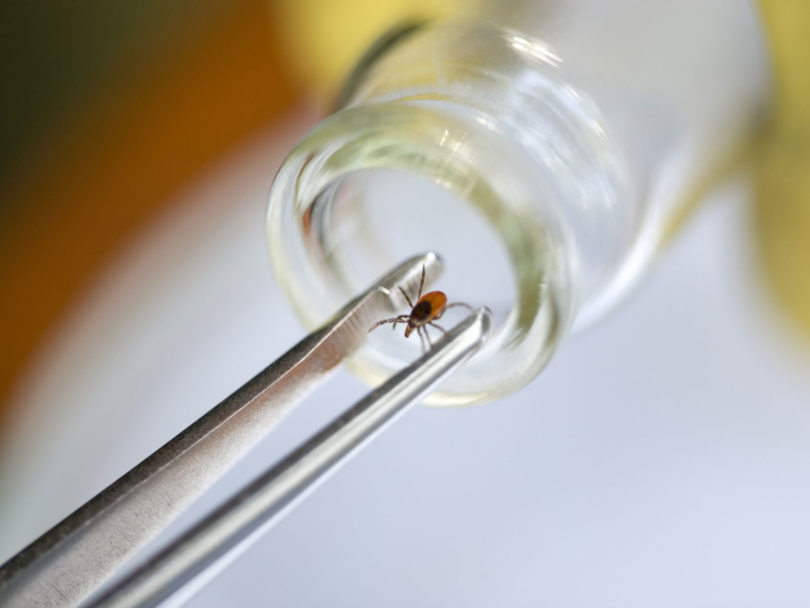They’re heeere. Ticks, that is. Specifically, black-legged ticks that spread Lyme disease. More commonly known as deer ticks, these tiny pests are about the size of a sesame seed in the nymph, or adolescent, stage when ticks are most likely to spread the disease. They are also the cause of an estimated 300,000 cases of Lyme disease per year in this country, according to the Centers for Disease Control and Prevention. Nymphs are active between May and July, so now is the ideal time to prepare for the worst.
Lyme disease is a bacterial infection that, once having entered the body, can infect any organ—including the heart, brain and nervous system.
Undetected and left untreated, chronic Lyme disease can severely impair one’s health and quality of life.
Patients, whether human or canine, may suffer from severe joint pain, cognitive impairment, memory loss, heart damage and more.
Since the first diagnosed case of Lyme disease was reported in the early 1980s, cases have skyrocketed for several reasons: mild winters, an increase in deer population, and because humans continually build homes in places ticks love—the heart of wooded areas. As tick and deer numbers grow in woods that surround backyards, many people are at risk of catching tick-borne diseases right outside their doors.
While easily contracted, Lyme disease has multiple symptoms that often mimic those of other diseases, making it difficult to diagnose. For the best prevention, know the basics of Lyme disease.
Lyme Disease Symptoms
- Flu-like symptoms, such as fever, chills, achy joints and muscles
- A red, expanding skin rash. Note that not all rashes look like a target or a bull’s-eye
- Headache, fatigue and neck stiffness
- Shortness of breath or chest pain
- Symptoms in dogs include lethargy, loss of appetite
and excessive sleeping
Lyme Disease Prevention
The best way to protect one’s family, including furry members, is to avoid contact with ticks and remove any found immediately. Removing a tick within 24 to 36 hours of a bite can prevent pathogens from being passed into the blood.
- Avoid tall grassy areas, leaf debris, fallen logs and bushes.
- Wear light-colored clothing and hats and long-sleeved shirts tucked into long pants. Tuck pants into socks and wear closed-toe shoes.
- Wear clothing pre-treated with the repellent permethrin.
- Use repellents with at least 20 percent DEET.
- Walk in the center of hiking trails away from tree limbs and plants.
- Shower immediately after outdoor activities and remove any ticks right away.
- Do a daily tick check on people and pets. Ticks like to hide, so check in and behind the ears, the scalp, armpits, backs of knees, belly button and groin area.
- Hiding places on dogs and cats include between toes, in and behind ears and the tail area.
- Repellents such as picaridin and oil of lemon eucalyptus have been deemed effective by the CDC against some insects, but not ticks. For humans and animals, pesticide-based preventatives have been shown to be the most effective protection from tick-borne diseases. There are several topical and oral preventatives for dogs and cats. Consult your veterinarian to determine which is best for your fur babies.
If you find a tick
- Use tweezers to grasp the tick as close to the skin as possible. Pull upward with even, steady pressure.
- Don’t squeeze the body of the tick, as this will push whatever is in the tick into the skin.
- Don’t use Vaseline, a match or anything else to “smother” the tick.
- Watch for symptoms.
If you feel ill and especially if you have a fever, visit your doctor. Early detection and treatment with antibiotics can lead to a full recovery and prevent Lyme-related issues from cropping up later in life.



